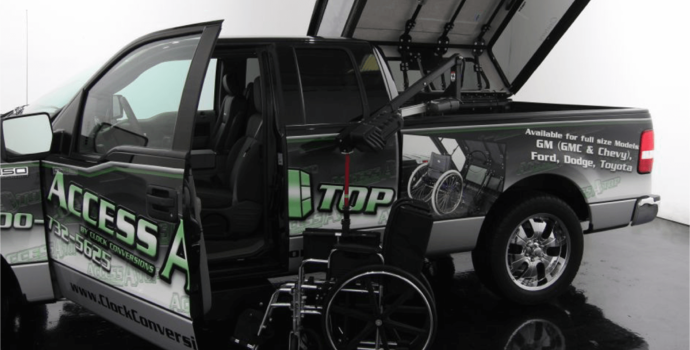When it comes to selecting a wheelchair van that suits your individual needs, understanding the differences between rear-entry and side-entry models is key. The layout of your accessible van will be one of the most important elements of your mobility van project, and your final decision will determine the different uses you can make for your van. It is therefore important to determine your needs ahead of time and also to understand the characteristics of each layout. With that in mind, here’s a quick look at the differences between rear-entry vans and side-entry vans.
Rear-Entry Wheelchair Vans
Rear-entry vans generally have a lower overall cost compared to their side-entry counterparts, due in part to their more simplistic design, and they tend to offer a wider range of available seating configurations. Because they typically feature a lift or ramp in the back of the vehicle, rear entry vans may also be easier to park or maneuver in tight spaces, although they can present challenges when it comes to parking parallel to curbs or tall obstacles.
Side-Entry Wheelchair Vans
Side-entry vans, on the other hand, offer a unique blend of accessibility and versatility that may make them a better choice for many individuals. Since this design involves a ramp on the side of the vehicle, passengers can more easily access the van from a curb or inclined surface, giving them greater freedom to explore their surroundings. Additionally, side-entry vans tend to offer more headroom and seating space compared to traditional rear-entry models, making them a more comfortable choice for a wider range of passengers.
Ultimately, choosing between the different entry points of your wheelchair van comes down to budget and more importantly, needs. Determining the intended use of your van and what is most convenient for you are the keys. If you need more information, please do not hesitate to reach out.







